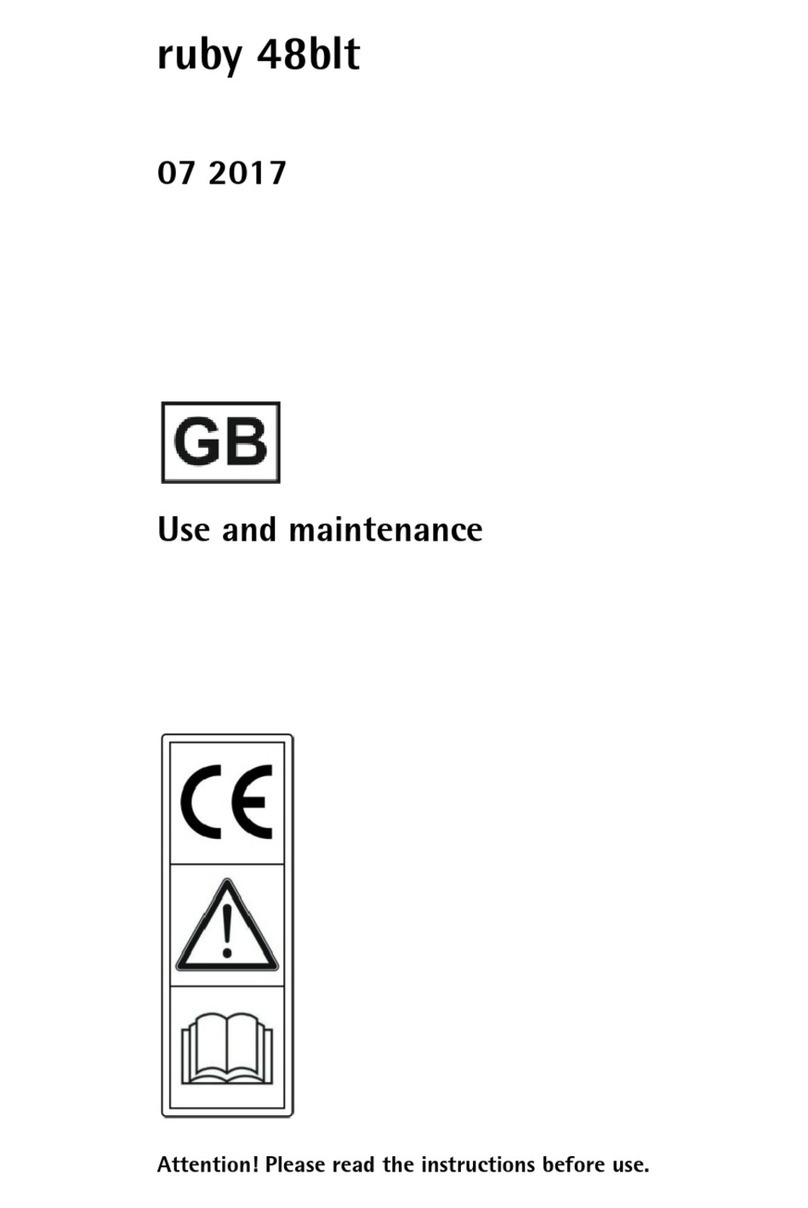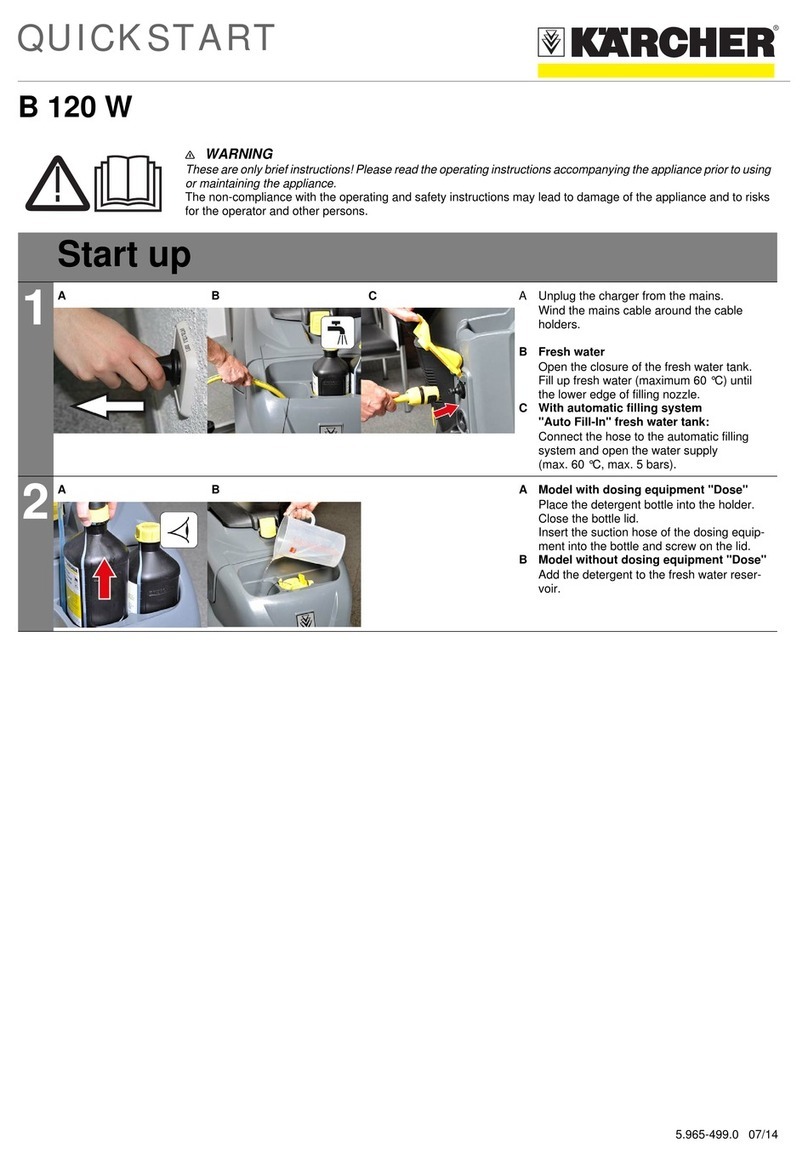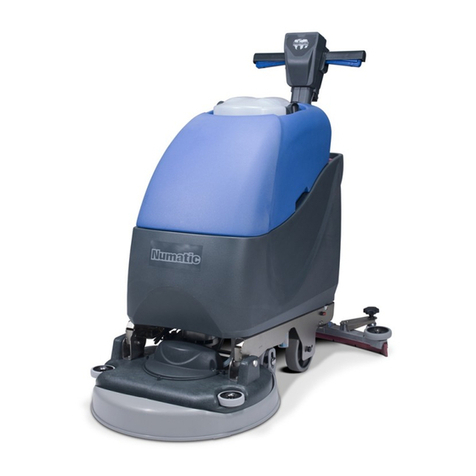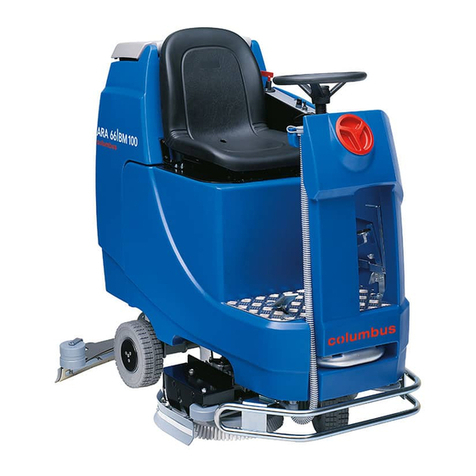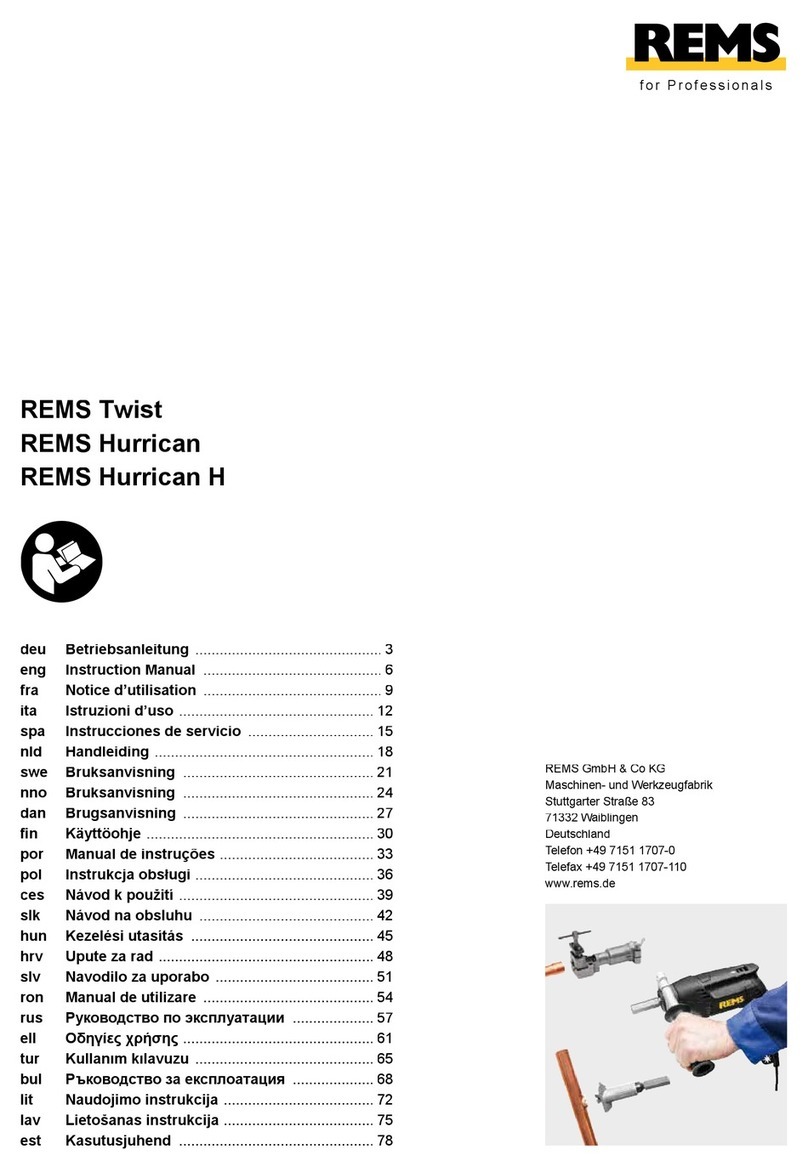Speaka Professional 2587734 User manual

1
Bedienungsanleitung
4K HDMI Audio Extractor mit ARC
Best.-Nr. 2587734
1 Bestimmungsgemäße Verwendung
Bei dem Produkt handelt es sich um einen HDMI Audio Extractor mit Audio Return Channel
(ARC)-Funktionalität.
■Verwenden Sie das Produkt, um das Videosignal einer Videoquelle an ein Anzeigegerät
(Beispiel: Fernsehgerät) und gleichzeitig das Audiosignal der Videoquelle an ein Sound-
system zu senden.
■Verwenden Sie das Produkt, um das Audiosignal des Anzeigegeräts (Beispiel: Smart
TV) über den Audio Return Channel (ARC) an ein Soundsystem zu senden.
Die Stromversorgung erfolgt über einen 5-V/DC-USB-Eingang.
Das Produkt ist ausschließlich für den Innengebrauch bestimmt. Verwenden Sie es also
nicht im Freien.
Der Kontakt mit Feuchtigkeit ist in jedem Fall zu vermeiden.
Falls Sie das Produkt für andere als die zuvor genannten Zwecke verwenden, könnte das
Produkt beschädigt werden.
Unsachgemäßer Gebrauch kann zu Kurzschluss, Feuer, Stromschlag oder anderen Gefähr-
dungen führen.
Dieses Produkt entspricht den gesetzlichen, nationalen und europäischen Anforderungen.
Aus Sicherheits- und Zulassungsgründen dürfen Sie dieses Produkt nicht umbauen und/
oder verändern.
Lesen Sie sich die Bedienungsanleitung sorgfältig durch und bewahren Sie sie sicher auf.
Geben Sie das Produkt nur zusammen mit der Bedienungsanleitung an Dritte weiter.
Alle enthaltenen Firmennamen und Produktbezeichnungen sind Warenzeichen der jeweili-
gen Inhaber. Alle Rechte vorbehalten.
HDMI ist eine eingetragene Marke der HDMI Licensing L.L.C.
2 Lieferumfang
■Audio Extractor
■HDMI-Kabel
■USB-Kabel
■Netzteil
■Bedienungsanleitung
3 Neueste Informationen zum Produkt
Laden Sie die neuesten Produktinformationen unter www.conrad.com/downloads herunter
oder scannen Sie den abgebildeten QR-Code. Folgen Sie den Anweisungen auf der Websi-
te.
4 Symbolerklärung
Folgende Symbole befinden sich auf dem Produkt/Gerät oder im Text:
Dieses Symbol warnt vor Gefahren, die zu Verletzungen führen können.
Dieses Symbol warnt vor gefährlicher Spannung, die zu Verletzungen durch
einen elektrischen Schlag führen kann.
5 Sicherheitshinweise
Lesen Sie sich die Bedienungsanleitung sorgfältig durch und beachten Sie
insbesondere die Sicherheitshinweise. Sollten Sie die in dieser Bedie-
nungsanleitung enthaltenen Sicherheitshinweise und Informationen für
einen ordnungsgemäßen Gebrauch nicht beachten, übernehmen wir keine
Haftung für daraus resultierende Verletzungen oder Sachschäden. Darüber
hinaus erlischt in solchen Fällen die Gewährleistung/Garantie.
5.1 Allgemein
■Das Produkt ist kein Spielzeug. Halten Sie es von Kindern und Haustieren fern.
■Lassen Sie Verpackungsmaterial nicht achtlos herumliegen. Dieses könnte für Kinder zu
einem gefährlichen Spielzeug werden.
■Falls Sie Fragen haben, die mit diesem Dokument nicht beantwortet werden können,
wenden Sie sich an unseren technischen Kundendienst oder an sonstiges Fachpersonal.
■Lassen Sie Wartungs-, Anpassungs- und Reparaturarbeiten ausschließlich von einem
Fachmann bzw. einer Fachwerkstatt durchführen.
5.2 Handhabung
■Gehen Sie stets vorsichtig mit dem Produkt um. Stöße, Schläge oder das Herunterfallen
aus geringer Höhe können das Produkt beschädigen.
5.3 Betriebsumgebung
■Setzen Sie das Produkt keiner mechanischen Beanspruchung aus.
■Schützen Sie das Produkt vor extremen Temperaturen, starken Stößen, brennbaren Ga-
sen, Dämpfen und Lösungsmitteln.
■Schützen Sie das Produkt vor hoher Feuchtigkeit und Nässe.
■Schützen Sie das Produkt vor direkter Sonneneinstrahlung.
■Schalten Sie das Produkt niemals gleich dann ein, wenn dieses von einem kalten in
einen warmen Raum gebracht wird. Das dabei entstehende Kondenswasser kann unter
Umständen das Produkt zerstören. Lassen Sie das Produkt zuerst auf Zimmertempera-
tur kommen, bevor Sie es in Betrieb nehmen.
5.4 Bedienung
■Sollten Sie Zweifel bezüglich des Betriebs, der Sicherheit oder dem Anschließen des
Produkts haben, wenden Sie sich an einen Fachmann.
■Sollte kein sicherer Betrieb mehr möglich sein, nehmen Sie das Produkt außer Betrieb
und schützen Sie es vor unbeabsichtigter Verwendung. Sehen Sie UNBEDINGT davon
ab, das Produkt selbst zu reparieren. Der sichere Betrieb ist nicht mehr gewährleistet,
wenn das Produkt:
– sichtbare Schäden aufweist,
– nicht mehr ordnungsgemäß funktioniert,
– über einen längeren Zeitraum unter ungünstigen Umgebungsbedingungen gelagert
wurde oder
– erheblichen Transportbelastungen ausgesetzt wurde.
5.5 Angeschlossene Geräte
■Beachten Sie auch die Sicherheitshinweise und Bedienungsanleitungen der übrigen Ge-
räte, an die das Produkt angeschlossen wird.
5.6 Netzteil
Verändern oder reparieren Sie keine Komponenten der Stromversorgung, ein-
schließlich Netzstecker, Netzkabel und Netzteile. Verwenden Sie keine beschä-
digten Komponenten. Lebensgefahr durch Stromschlag!
■Schließen Sie das Produkt an einer Steckdose an, die jederzeit leicht zugänglich ist.
■Verwenden Sie ausschließlich das mitgelieferte Netzteil für die Stromversorgung.
■Als Spannungsquelle für das Netzteil darf nur eine haushaltsübliche Steckdose verwen-
det werden, die an das öffentliche Versorgungsnetz angeschlossen ist. Überprüfen Sie
vor dem Anschluss des Netzteils, ob die Spannungsangaben auf dem Netzteil mit der
Spannung in Ihrem Haushalt übereinstimmen.
■Das Netzteil darf nicht mit nassen Händen angeschlossen oder getrennt werden.
■Trennen Sie das Netzteil aus Sicherheitsgründen während eines Gewitters stets von der
Stromversorgung.
■Sollte das Steckernetzteil Beschädigungen aufweisen, so fassen Sie das Netzteil nicht
an, da dies zu einem tödlichen Stromschlag führen kann! Gehen Sie wie folgt vor:
– Schalten Sie zuerst die Netzspannung zur Steckdose ab, an der das Steckernetzteil
angeschlossen ist (zugehörigen Leitungsschutzschalter abschalten bzw. Sicherung
herausdrehen, anschließend FI-Schutzschalter abschalten, sodass die Netzsteckdose
allpolig von der Netzspannung getrennt ist).
– Ziehen Sie das Netzteil aus der Steckdose.
– Verwenden Sie ein neues Netzteil der gleichen Bauart. Verwenden Sie das beschä-
digte Netzteil nicht weiter.
6 Produktübersicht
DC 5V HDMI OUT
ARC HDMI INPUT TV/2.0/5.1
SPDIF L/R
1 2 3 4 5 6
7 8 9 10
1 3,5 mm Stereo-Audiobuchse 2 ARC-Schalter
3 ARC-Anzeige 4 HDMI input-Anschluss
5 HDMI-Eingangsanzeige 6 EDID-Schalter
7 Stromeingang 8 HDMI output-Anschluss
9 Optischer Audioanschluss (S/PDIF) 10 Analoge RCA-Audiobuchsen
7 Anschluss
Wie Sie Ihre Video- und Audiogeräte anschließen, hängt vor allem von Ihrem Soundsystem
ab.
Die folgenden Video-zu-Audio-Optionen sind verfügbar:
■Analoges Stereo-Audio über 3,5-mm-Kopfhörerbuchse oder RCA-Anschluss
■5.1 Surround-Sound über einen optischen S/PDIF-Anschluss
■Pass-Through-Audio (max. LPCM7.1), wobei das HDMI-Signal 1:1 weitergegeben wird
■Audio Return Channel (ARC): Rückführung des Audiosignals vom Anzeigegerät, das am
HDMI-Ausgang angeschlossen ist, zum Soundsystem

2
7.1 Einrichten von analogem Stereo-Audio
So geben Sie Audio von der Videoquelle in Stereo wieder:
1. Schalten Sie die Geräte aus, die Sie anschließen möchten.
2. Schließen Sie die Videoquelle an den HDMI-Eingang HDMI IN an.
3. Schließen Sie das Anzeigegerät an den HDMI-Ausgang HDMI OUT an.
4. Schließen Sie Ihr Soundsystem an die 3,5-mm-Stereo-Kopfhörerbuchse oder die analo-
gen RCA-Audiobuchsen L/R an.
5. Stellen Sie den EDID-Schalter auf die Position 2.0.
6. Schieben Sie den ARC-Schalter ARC nach links (weg vom HDMI-Eingang).
7.2 Einrichten von 5.1-Surround-Sound-Audio
So geben Sie Audio von der Videoquelle in 5.1-Surround-Sound wieder:
1. Schalten Sie die Geräte aus, die Sie anschließen möchten.
2. Schließen Sie die Videoquelle an den HDMI-Eingang HDMI IN an.
3. Schließen Sie das Anzeigegerät an den HDMI-Ausgang HDMI OUT an.
4. Schließen Sie Ihr Soundsystem an den optischen Audioanschluss S/PDIF an.
5. Stellen Sie den EDID-Schalter auf die Position 5.1.
6. Schieben Sie den ARC-Schalter ARC nach links (weg vom HDMI-Eingang).
7.3 Einrichten von Pass-Through-Audio
Im Pass-Through-Modus wird das HDMI-Signal 1:1 durchgereicht. Alle angeschlossenen
Geräte werden über die EDID-Einstellungen (Extended Display Identification Data) des an
den HDMI-Ausgang HDMI OUT angeschlossenen HDMI-Geräts (Beispiel: Smart TV) ange-
sprochen. Auf diese Weise kann das Audiosignal höchstens LPCM 7.1 sein.
Hinweise:
– Ob der optische Audioanschluss S/PDIF ein Audiosignal überträgt, hängt von den Be-
sonderheiten Ihres Audiosystems ab.
– Ob die analogen RCA-Audiobuchsen L/R ein Audiosignal übertragen, hängt von den
Besonderheiten Ihres Audiosystems ab.
– Die 3,5-mm-Kopfhörerbuchse überträgt kein Audiosignal.
So stellen Sie den Anschluss her:
1. Schalten Sie die Geräte aus, die Sie anschließen möchten.
2. Schließen Sie die Videoquelle an den HDMI-Eingang HDMI IN an.
3. Schließen Sie das Anzeigegerät an den HDMI-Ausgang HDMI OUT an.
4. Schließen Sie Ihr Soundsystem an den optischen Audioanschluss S/PDIF oder die ana-
logen RCA-Audiobuchsen L/R an.
5. Stellen Sie den EDID-Schalter auf die Position TV.
6. Schieben Sie den ARC-Schalter ARC nach links (weg vom HDMI-Eingang).
7.4 Einrichten des Audio Return Channel (ARC)
Mit der Funktion Audio Return Channel (ARC) können Sie das Audiosignal vom Anzeigege-
rät (Beispiel: Smart TV) zum Soundsystem zurückführen. Dadurch entfällt die Notwendigkeit
eines separaten Audioanschlusses zwischen dem Anzeigegerät und dem Soundsystem.
Hinweise:
– Ob der optische Audioanschluss S/PDIF ein Audiosignal überträgt, hängt von den Be-
sonderheiten Ihres Audiosystems ab.
– Ob die analogen RCA-Audiobuchsen L/R ein Audiosignal übertragen, hängt von den
Besonderheiten Ihres Audiosystems ab.
– Die 3,5-mm-Kopfhörerbuchse überträgt kein Audiosignal.
So stellen Sie den Anschluss her:
1. Schalten Sie die Geräte aus, die Sie anschließen möchten.
2. Schließen Sie das Anzeigegerät an den HDMI-Ausgang HDMI OUT an.
3. Schließen Sie Ihr Soundsystem an den optischen Audioanschluss S/PDIF oder die ana-
logen RCA-Audiobuchsen L/R an.
4. Stellen Sie den EDID-Schalter auf die Position TV.
5. Schieben Sie den ARC-Schalter ARC nach rechts (hin zum HDMI-Eingang).
8 Bedienung
1. Schalten Sie die Geräte ein, die an den Audio Extractor angeschlossen sind.
2. Schließen Sie das USB-Kabel an die Stromeingangsbuchse DC 5V an.
3. Schließen Sie das USB-Kabel an das Netzteil an.
4. Schließen Sie das Netzteil an das Stromnetz an.
àDie HDMI-Eingangsanzeige leuchtet auf, um die angeschlossene HDMI-Videoquelle
anzuzeigen.
à(Wenn ARC aktiviert ist), leuchtet die ARC-Anzeige auf.
5. Starten Sie die Videowiedergabe.
9 Reinigung und Wartung
Wichtig:
– Verwenden Sie keine aggressiven Reinigungsmittel, Reinigungsalkohol oder andere
chemische Lösungsmittel. Diese können zu Schäden am Gehäuse und zu Fehlfunktio-
nen des Produkts führen.
– Tauchen Sie das Produkt nicht in Wasser.
1. Trennen Sie das Produkt von der Stromversorgung.
2. Verwenden Sie zum Reinigen des Produkts ein trockenes, faserfreies Tuch.
10 Entsorgung
Alle Elektro- und Elektronikgeräte, die auf den europäischen Markt gebracht wer-
den, müssen mit diesem Symbol gekennzeichnet werden. Dieses Symbol weist
darauf hin, dass dieses Gerät am Ende seiner Lebensdauer getrennt von unsor-
tiertem Siedlungsabfall zu entsorgen ist.
Jeder Besitzer von Altgeräten ist verpflichtet, Altgeräte einer vom unsortierten
Siedlungsabfall getrennten Erfassung zuzuführen. Die Endnutzer sind verpflich-
tet, Altbatterien und Altakkumulatoren, die nicht vom Altgerät umschlossen sind,
sowie Lampen, die zerstörungsfrei aus dem Altgerät entnommen werden können,
vor der Abgabe an einer Erfassungsstelle vom Altgerät zerstörungsfrei zu tren-
nen.
Vertreiber von Elektro- und Elektronikgeräten sind gesetzlich zur unentgeltlichen Rücknah-
me von Altgeräten verpflichtet. Conrad stellt Ihnen folgende kostenlose Rückgabemöglich-
keiten zur Verfügung (weitere Informationen auf unserer Internet-Seite):
■in unseren Conrad-Filialen
■in den von Conrad geschaffenen Sammelstellen
■in den Sammelstellen der öffentlich-rechtlichen Entsorgungsträger oder bei den von Her-
stellern und Vertreibern im Sinne des ElektroG eingerichteten Rücknahmesystemen
Für das Löschen von personenbezogenen Daten auf dem zu entsorgenden Altgerät ist der
Endnutzer verantwortlich.
Beachten Sie, dass in Ländern außerhalb Deutschlands evtl. andere Pflichten für die Altge-
räte-Rückgabe und das Altgeräte-Recycling gelten.
11 Technische Daten
11.1 Produkt
Eingang .......................................... 5 V/DC, 1 A
HDCP-Unterstützung...................... HDCP 2.2
HDMI-Auflösung ............................. 4K2K (bei 60 Hz wie in HDMI 2.0 angegeben) / 3D /
1080p / 1080i / 720p / 720i / 576p / 576i / 480p / 480i
Farbtiefe ......................................... 24 Bit / 30 Bit / 36 Bit
HDMI-ARC-Unterstützung.............. Ja
Optischer Audioausgang ................ S/PDIF
Analoger Audioausgang ................. 3,5-mm-Stereo-Kopfhöreranschluss / RCA
Digitales Audioformat ..................... DTS-HD / Dolby TrueHD / LPCM7.1 / DTS /
Dolby-AC3 / DSD
Betriebsbedingungen...................... -15 bis +55 °C, 5 - 90 % rF (nicht kondensierend)
Lagerbedingungen.......................... -15 bis +55 °C, 5 - 90 % rF (nicht kondensierend)
Abmessungen (B x H x T) .............. 84,5 x 21 x 62 mm
Gewicht........................................... ca. 135 g
11.2 Netzteil
Eingang ......................................... 100 - 240 V/AC, 50/60 Hz, 0,3 A
Ausgangsspannung/-strom ............ 5,0 V/DC, 1 A
Dies ist eine Publikation der Conrad Electronic SE, Klaus-Conrad-Str. 1, D-92240 Hirschau (www.conrad.com).
Alle Rechte einschließlich Übersetzung vorbehalten. Reproduktionen jeder Art, z. B. Fotokopie, Mikroverfilmung, oder
die Erfassung in elektronischen Datenverarbeitungsanlagen, bedürfen der schriftlichen Genehmigung des Herausge-
bers. Nachdruck, auch auszugsweise, verboten. Die Publikation entspricht dem technischen Stand bei Drucklegung.
Copyright by Conrad Electronic SE.
*2587734_V1_0722_jh_mh_de 9007199815995147-1 I2/O1 en

3
Operating Instructions
4K HDMI Audio Extractor with ARC
Item no: 2587734
1 Intended use
The product is an HDMI audio extractor with Audio Return Channel (ARC) functionality.
■Use the product to send the video signal of a video source to a display device (example:
TV) and at the same time send the audio signal of the video source to a sound system.
■Use the product to send the audio signal of the display device (example: Smart TV) to a
sound system via the Audio Return Channel (ARC).
Power is supplied through a 5 V/DC USB input.
The product is intended for indoor use only. Do not use it outdoors.
Contact with moisture must be avoided under all circumstances.
If you use the product for purposes other than those described, the product may be dam-
aged.
Improper use can result in short circuits, fires, electric shocks or other hazards.
The product complies with the statutory national and European requirements.
For safety and approval purposes, you must not rebuild and/or modify the product.
Read the operating instructions carefully and store them in a safe place. Make this product
available to third parties only together with the operating instructions.
All company names and product names are trademarks of their respective owners. All rights
reserved.
HDMI is a registered trademark of HDMI Licensing L.L.C.
2 Delivery contents
■Audio extractor
■HDMI cable
■USB cable
■Power adaptor
■Operating instructions
3 Latest product information
Download the latest product information at www.conrad.com/downloads or scan the QR
code shown. Follow the instructions on the website.
4 Description of symbols
The following symbols are on the product/appliance or are used in the text:
The symbol warns of hazards that can lead to personal injury.
The symbol warns of dangerous voltage that can lead to personal injury by elec-
tric shock.
5 Safety instructions
Read the operating instructions carefully and especially observe the safety
information. If you do not follow the safety instructions and information on
proper handling, we assume no liability for any resulting personal injury or
damage to property. Such cases will invalidate the warranty/guarantee.
5.1 General
■The product is not a toy. Keep it out of the reach of children and pets.
■Do not leave packaging material lying around carelessly. This may become dangerous
playing material for children.
■If you have questions which remain unanswered by this information product, contact our
technical support service or other technical personnel.
■Maintenance, modifications and repairs must only be completed by a technician or an
authorised repair centre.
5.2 Handling
■Handle the product carefully. Jolts, impacts or a fall even from a low height can damage
the product.
5.3 Operating environment
■Do not place the product under any mechanical stress.
■Protect the appliance from extreme temperatures, strong jolts, flammable gases, steam
and solvents.
■Protect the product from high humidity and moisture.
■Protect the product from direct sunlight.
■Do not switch the product on after it has been taken from a cold to a warm environment.
The condensation that forms might destroy the product. Allow the product to reach room
temperature before you use it.
5.4 Operation
■Consult an expert when in doubt about the operation, safety or connection of the
product.
■If it is no longer possible to operate the product safely, take it out of operation and pro-
tect it from any accidental use. DO NOT attempt to repair the product yourself. Safe op-
eration can no longer be guaranteed if the product:
– is visibly damaged,
– is no longer working properly,
– has been stored for extended periods in poor ambient conditions or
– has been subjected to any serious transport-related stresses.
5.5 Connected devices
■Also observe the safety and operating instructions of any other devices which are con-
nected to the product.
5.6 Power adapter
Do not modify or repair mains supply components including mains plugs, mains
cables, and power supplies. Do not use damaged components. Risk of death by
electric shock!
■Connect the appliance to a wall socket that can be accessed easily.
■As power supply, only use the supplied mains adaptor.
■Only connect the power adaptor to a normal mains socket connected to the public sup-
ply. Before plugging in the power adaptor, check whether the voltage stated on the
power adaptor complies with the voltage of your electricity supplier.
■Never connect or disconnect power adaptors if your hands are wet.
■For safety reasons, disconnect the power adaptor from the mains socket during storms.
■Do not touch the power adapter if there are any signs of damage, as this may cause a
fatal electric shock! Take the following steps:
– Switch off the mains voltage to the socket containing the power adapter (switch off the
corresponding circuit breaker or remove the safety fuse, and then switch off the cor-
responding RCD protective switch).
– Unplug the power adapter from the mains socket.
– Use a new power adapter of the same design. Do not use the damaged adapter
again.
6 Product overview
DC 5V HDMI OUT
ARC HDMI INPUT TV/2.0/5.1
SPDIF L/R
1 2 3 4 5 6
7 8 9 10
1 3.5 mm stereo audio jack 2 ARC switch
3 ARC indicator 4 HDMI input port
5 HDMI input indicator 6 EDID switch
7 Power input socket 8 HDMI output port
9 Optical audio port (S/PDIF) 10 Analogue RCA audio sockets
7 Connection
How you will connect your video and audio devices will greatly depend your sound system.
The following video to audio options are available:
■Analogue stereo audio via 3.5 mm headphone jack or RCA connection
■5.1 Surround sound via optical S/PDIF connection
■Pass-through audio (max. LPCM7.1) with the HDMI signal passed through 1:1
■Audio Return Channel (ARC): return the audio signal from the display device connected
to the HDMI output to the sound system
7.1 Setting up analogue stereo audio
To play back audio from the video source in stereo:
1. Switch off the devices you want to connect.
2. Connect the video source to the HDMI input port HDMI IN.
3. Connect the display device to the HDMI output port HDMI OUT.
4. Connect your sound system to the 3.5 mm stereo headphone jack or the analogue RCA
audio sockets L/R.
5. Set the EDID switch to the position 2.0.
6. Push the ARC switch ARC to the left (away from the HDMI input port).
7.2 Setting up 5.1 surround sound audio
To play back audio from the video source in 5.1 surround sound:

4
1. Switch off the devices you want to connect.
2. Connect the video source to the HDMI input port HDMI IN.
3. Connect the display device to the HDMI output port HDMI OUT.
4. Connect your sound system to the optical audio port S/PDIF.
5. Set the EDID switch to the position 5.1.
6. Push the ARC switch ARC to the left (away from the HDMI input port).
7.3 Setting up pass-through audio
In pass-through mode, the HDMI signal is passed through 1:1. All connected devices will be
addressed by the EDID settings (Extended Display Identification Data) of the HDMI device
connected to the HDMI output port HDMI OUT (example: Smart TV). This way, the audio
signal can be at most LPCM 7.1.
Notes:
– If the optical audio port S/PDIF carries an audio signal depends on the specifics of
your audio sound system.
– If the analogue RCA audio sockets L/R carry an audio signal depends on the specifics
of your audio sound system.
– The 3.5 mm headphone jack does not carry an audio signal.
To set up the connection:
1. Switch off the devices you want to connect.
2. Connect the video source to the HDMI input port HDMI IN.
3. Connect the display device to the HDMI output port HDMI OUT.
4. Connect your sound system to the optical audio port SPDIF or the analogue RCA audio
sockets L/R.
5. Set the EDID switch to the position TV.
6. Push the ARC switch ARC to the left (away from the HDMI input port).
7.4 Setting up Audio Return Channel (ARC)
With the Audio Return Channel (ARC) function you can return the audio signal from the dis-
play device (example: Smart TV) to the sound system. This eliminates the need for a separ-
ate audio connection between the display device and the sound system.
Notes:
– If the optical audio port S/PDIF carries an audio signal depends on the specifics of
your audio sound system.
– If the analogue RCA audio sockets L/R carry an audio signal depends on the specifics
of your audio sound system.
– The 3.5 mm headphone jack does not carry an audio signal.
To set up the connection:
1. Switch off the devices you want to connect.
2. Connect the display device to the HDMI output port HDMI OUT.
3. Connect your sound system to the optical audio port SPDIF or the analogue RCA audio
sockets L/R.
4. Set the EDID switch to the position TV.
5. Push the ARC switch ARC to the right (towards the HDMI input port).
8 Operation
1. Switch on the devices that are connected to the audio extractor.
2. Connect the USB cable to the power input socket DC 5V.
3. Connect the USB cable to the power adaptor.
4. Connect the power adaptor to the mains supply.
àThe HDMI input indicator lights up to indicate the connected HDMI video source.
à(If ARC is enabled) the ARC indicator lights up.
5. Start the video playback.
9 Cleaning and care
Important:
– Do not use aggressive cleaning agents, rubbing alcohol or other chemical solutions.
They damage the housing and can cause the product to malfunction.
– Do not immerse the product in water.
1. Disconnect the product from the power supply.
2. Clean the product with a dry, fibre-free cloth.
10 Disposal
This symbol must appear on any electrical and electronic equipment placed on
the EU market. This symbol indicates that this device should not be disposed of
as unsorted municipal waste at the end of its service life.
Owners of WEEE (Waste from Electrical and Electronic Equipment) shall dispose
of it separately from unsorted municipal waste. Spent batteries and accumulators,
which are not enclosed by the WEEE, as well as lamps that can be removed from
the WEEE in a non-destructive manner, must be removed by end users from the
WEEE in a non-destructive manner before it is handed over to a collection point.
Distributors of electrical and electronic equipment are legally obliged to provide free take-
back of waste. Conrad provides the following return options free of charge (more details on
our website):
■in our Conrad offices
■at the Conrad collection points
■at the collection points of public waste management authorities or the collection points
set up by manufacturers or distributors within the meaning of the ElektroG
End users are responsible for deleting personal data from the WEEE to be disposed of.
It should be noted that different obligations about the return or recycling of WEEE may apply
in countries outside of Germany.
11 Technical data
11.1 Product
Input ............................................... 5 V/DC, 1 A
HDCP support ................................ HDCP 2.2
HDMI resolution.............................. 4K2K (at 60 Hz as specified in HDMI 2.0) / 3D /
1080p / 1080i / 720p / 720i / 576p / 576i / 480p / 480i
Colour depth................................... 24 bit / 30 bit / 36 bit
HDMI ARC support......................... Yes
Optical audio output........................ S/PDIF
Analogue audio output.................... 3.5 mm stereo headphone jack / RCA
Digital audio format......................... DTS-HD / Dolby-trueHD / LPCM7.1 / DTS /
Dolby-AC3 / DSD
Operating conditions....................... -15 to +55 °C, 5 – 90 % RH (non-condensing)
Storage conditions.......................... -15 to +55 °C, 5 – 90 % RH (non-condensing)
Dimensions (W x H x D) ................. 84.5 x 21 x 62 mm
Weight ............................................ approx. 135 g
11.2 Power adapter
Input .............................................. 100 - 240 V/AC, 50/60 Hz, 0.3 A
Output ............................................ 5.0 V/DC, 1 A
This is a publication by Conrad Electronic SE, Klaus-Conrad-Str. 1, D-92240 Hirschau (www.conrad.com).
All rights including translation reserved. Reproduction by any method (e.g. photocopying, microfilming or the capture in
electronic data processing systems) requires prior written approval from the editor. Reprinting, also in part, is prohibited.
This publication reflects the technical status at the time of printing.
Copyright by Conrad Electronic SE.
*2587734_V1_0722_jh_mh_en 9007199815995147-2 I2/O1 en

5
Mode d’emploi
Extracteur audio HDMI4K avec ARC
N° de commande 2587734
1 Utilisation prévue
Le produit est un extracteur audio HDMI avec fonction de canal de retour audio (ARC)
■Utilisez le produit pour transmettre le signal vidéo d'une source vidéo à un dispositif d'af-
fichage (par exemple: TV) et envoyer simultanément le signal audio de la source vidéo
à un système audio.
■Grâce à ce produit, vous pouvez transmettre le signal audio du dispositif d'affichage (par
exemple: Smart TV) à un système audio via le canal de retour audio (ARC).
L'alimentation est fournie par une entrée USB de 5V/CC.
Le produit est destiné uniquement à une utilisation à l’intérieur. Ne l'utilisez pas à l’extérieur.
Dans tous les cas, le contact avec l’humidité doit être évité.
Toute utilisation à des fins autres que celles décrites pourrait endommager le produit.
Une mauvaise utilisation peut entraîner des risques tels que des courts-circuits, des incen-
dies, des chocs électriques, etc.
Ce produit est conforme aux exigences nationales et européennes en vigueur.
Pour des raisons de sécurité et d’homologation, toute restructuration et/ou modification du
produit est interdite.
Lisez attentivement les instructions du mode d’emploi et conservez-le dans un endroit sûr.
Ne mettez ce produit à la disposition de tiers qu’avec son mode d’emploi.
Tous les noms d’entreprises et appellations de produits sont des marques commerciales de
leurs propriétaires respectifs. Tous droits réservés.
HDMI est une marque déposée de HDMI Licensing L.L.C.
2 Contenu de l'emballage
■Extracteur audio
■Câbles HDMI
■Câble USB
■Adaptateur secteur
■Mode d’emploi
3 Dernières informations sur le produit
Téléchargez les dernières informations relatives au produit sur le site www.conrad.com/
downloads ou scannez le code QR indiqué. Suivez les instructions figurant sur le site Web.
4 Description des symboles
Les symboles suivants figurent sur le produit/appareil ou sont utilisés dans le texte:
Le symbole met en garde contre les dangers pouvant entraîner des blessures
corporelles.
Le symbole attire l’attention sur la présence d'une tension dangereuse pouvant
entraîner des blessures par choc électrique.
5 Consignes de sécurité
Lisez attentivement le mode d’emploi et observez particulièrement les
consignes de sécurité. Nous ne saurions être tenus pour responsables des
blessures corporelles ou des dommages matériels résultant du non-respect
des mises en garde et des indications relatives à une utilisation correcte fi-
gurant dans ce mode d'emploi. De tels cas entraînent l’annulation de la ga-
rantie.
5.1 Généralités
■Le produit n’est pas un jouet. Il doit rester hors de portée des enfants et des animaux do-
mestiques.
■Ne laissez pas traîner le matériel d’emballage. Celui-ci peut se révéler dangereux si des
enfants le prennent pour un jouet.
■Si vous avez des questions dont la réponse ne figure pas dans ce mode d’emploi,
contactez notre service d'assistance technique ou un autre technicien spécialisé.
■Toute manipulation d’entretien, d’ajustement ou de réparation doit être effectuée par un
spécialiste ou un atelier spécialisé.
5.2 Manipulation
■Manipulez le produit avec précaution. Des secousses, des chocs ou une chute, même
de faible hauteur, peuvent endommager le produit.
5.3 Conditions environnementales de fonctionnement
■N’exposez pas le produit à des contraintes mécaniques.
■Gardez l'appareil à l’abri de températures extrêmes, de secousses intenses, de gaz in-
flammables, de vapeurs et de solvants.
■Protégez le produit de l'humidité et des moisissures.
■Protégez le produit de la lumière directe du soleil.
■N’allumez pas l’appareil après son passage d’un environnement froid à un environne-
ment chaud. Cela peut causer la formation de condensation, qui peut détruire le produit.
Laissez le produit atteindre la température ambiante avant de l’utiliser.
5.4 Fonctionnement
■En cas de doute sur l’utilisation, les mesures de sécurité ou le branchement de ce pro-
duit, consultez un expert.
■Si une utilisation du produit en toute sécurité n’est plus possible, arrêtez de l’utiliser et
protégez-le de toute utilisation accidentelle. N'essayez PAS de réparer le produit vous-
même. Un fonctionnement sûr ne peut plus être garanti si le produit:
– est visiblement endommagé,
– ne fonctionne plus correctement,
– a été stocké pendant une période prolongée dans des conditions défavorables ou
– a été transporté dans des conditions très rudes.
5.5 Appareils raccordés
■Respectez également les informations concernant la sécurité et le mode d’emploi pour
les autres appareils connectés à ce produit.
5.6 Bloc d’alimentation
Ne modifiez pas et ne réparez pas les composantes de l’alimentation secteur, no-
tamment les prises secteur, les câbles secteur et les alimentations. N’utilisez pas
d’accessoires endommagés. Risque d’électrocution mortelle!
■Branchez l’appareil sur une prise murale facilement accessible.
■Pour l’alimentation électrique, n’utilisez que l’adaptateur secteur fourni.
■Ne branchez le bloc d’alimentation qu’à une prise de courant normale raccordée au ré-
seau public. Avant de brancher le bloc d’alimentation, vérifiez si la tension indiquée sur
celui-ci est conforme à celle de votre fournisseur d’électricité.
■Ne branchez ou débranchez jamais les blocs d’alimentation si vos mains sont mouillées.
■Pour des raisons de sécurité, débranchez le bloc d’alimentation de la prise électrique en
cas d’orage.
■Ne touchez pas le bloc d’alimentation s'il présente des signes de dommage, car cela
pourrait provoquer un choc électrique mortel! Suivez les étapes suivantes:
– Coupez la tension secteur dans la prise de courant à laquelle est branché l'adaptateur
secteur (coupez l'alimentation sur le disjoncteur correspondant ou retirez le fusible de
sécurité, puis coupez l'alimentation sur l'interrupteur de protection RCD correspon-
dant).
– Débranchez le bloc d’alimentation de la prise secteur.
– Utilisez un nouveau bloc d’alimentation de même modèle. N’utilisez plus l’adaptateur
endommagé.
6 Aperçu du produit
DC 5V HDMI OUT
ARC HDMI INPUT TV/2.0/5.1
SPDIF L/R
1 2 3 4 5 6
7 8 9 10
1 Fiche audio stéréo de 3,5mm 2 Commutateur ARC
3 Voyant ARC 4 Port HDMI input
5 Voyant de l’entrée HDMI 6 Commutateur EDID
7 Prise d’alimentation 8 Port HDMI output
9 Port audio optique (S/PDIF) 10 Prises audio analogiques RCA
7 Connexion
La méthode de connexion de vos appareils vidéo et audio dépend fortement de votre sys-
tème audio.
Les options de conversion vidéo/audio suivantes sont disponibles:
■Audio stéréo analogique via une prise pour casque de 3,5 mm ou une connexion RCA
■Son ambiophonique5.1 via une connexion optique S/PDIF
■Transfert audio (max. LPCM7.1) avec signal HDMI transmis 1:1
■Audio Return Channel (Canal de retour audio) (ARC): renvoie le signal audio du disposi-
tif d'affichage connecté à la sortie HDMI vers le système audio.
7.1 Configuration du son stéréo analogique
Pour lire le son de la source vidéo en stéréo:
1. Mettez hors tension les appareils que vous souhaitez connecter.
2. Connectez la source vidéo au port d'entrée HDMI IN.
3. Connectez le dispositif d'affichage au port de sortie HDMI HDMI OUT.
Table of contents
Languages:
Other Speaka Professional Scrubber manuals

Speaka Professional
Speaka Professional SP-6773284 User manual

Speaka Professional
Speaka Professional SP-AE-H/6K User manual

Speaka Professional
Speaka Professional SP-HAE-300 User manual

Speaka Professional
Speaka Professional 2521199 User manual

Speaka Professional
Speaka Professional 98 93 46 User manual
Popular Scrubber manuals by other brands
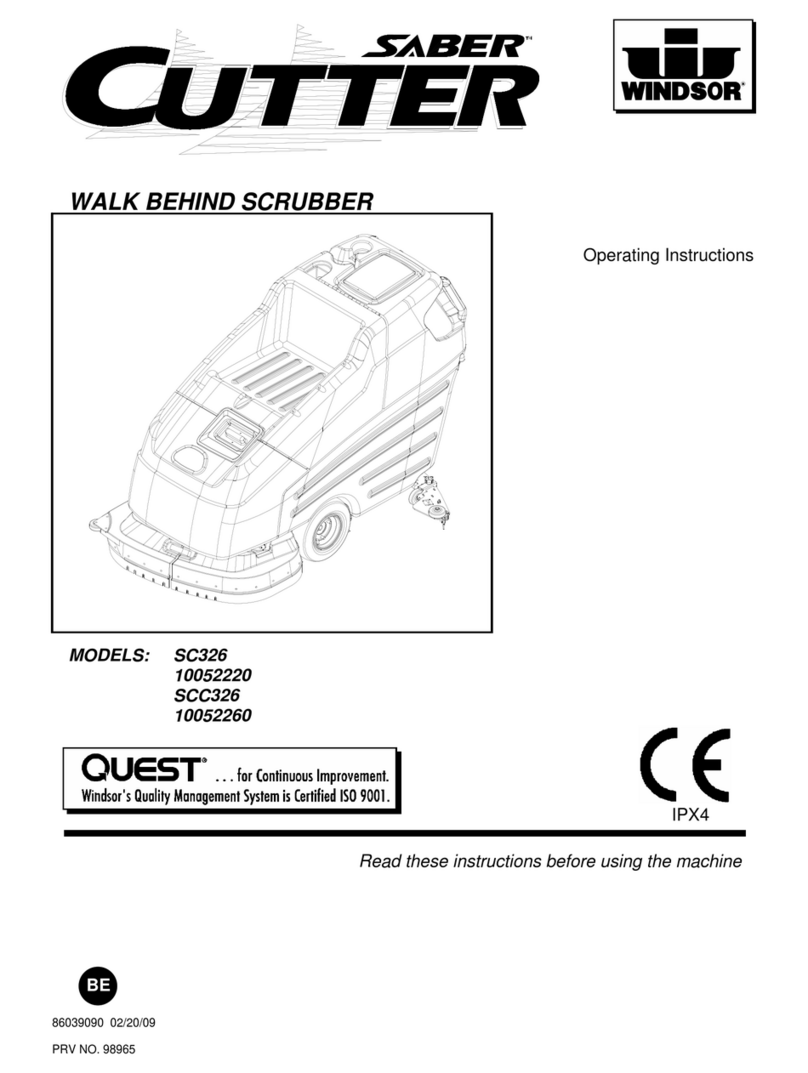
Windsor
Windsor Saber Cutter SC326 10052220 operating instructions

Powr-Flite
Powr-Flite PFX1380 SERIES Operators manual and parts lists
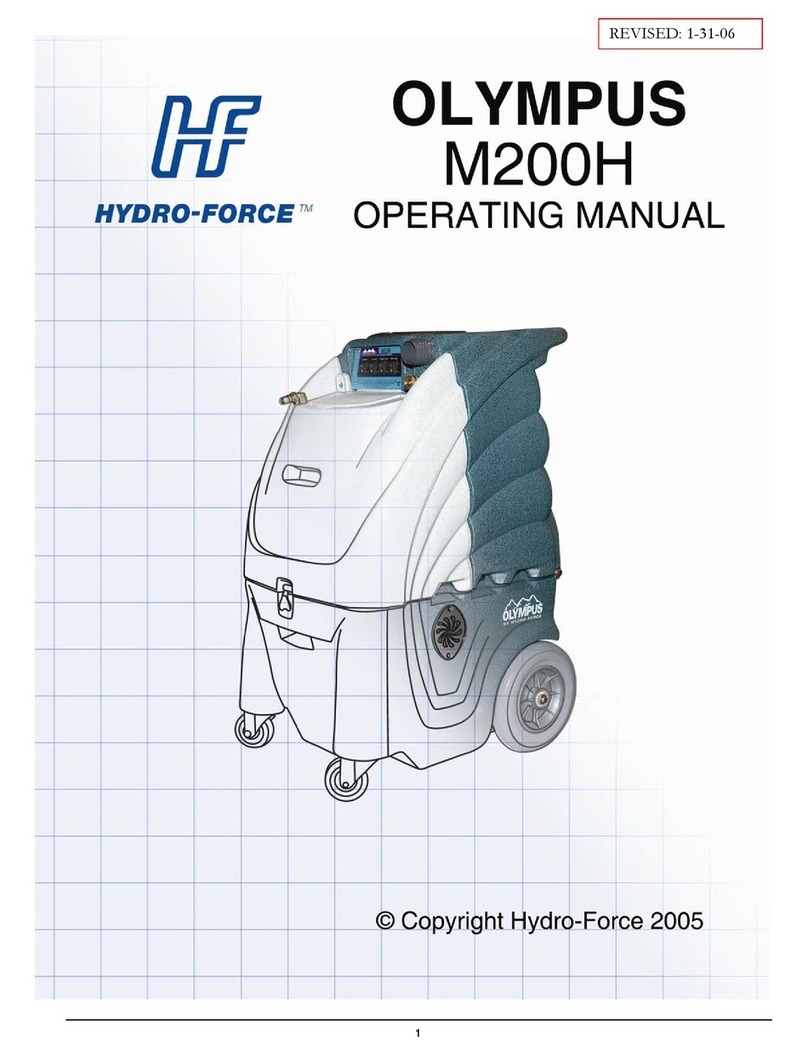
Olympus
Olympus M200H operating manual
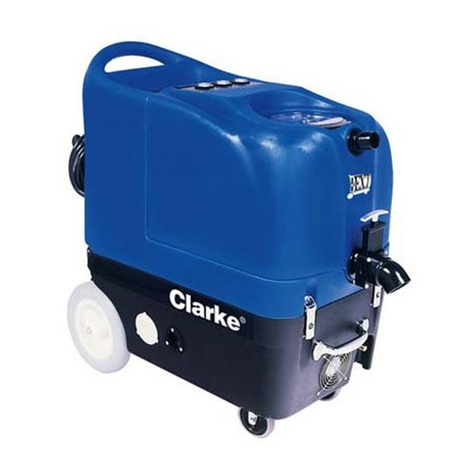
Clarke
Clarke BEXT 100H Operation?and safety

JOHNY VAC
JOHNY VAC JVC70BCT user guide
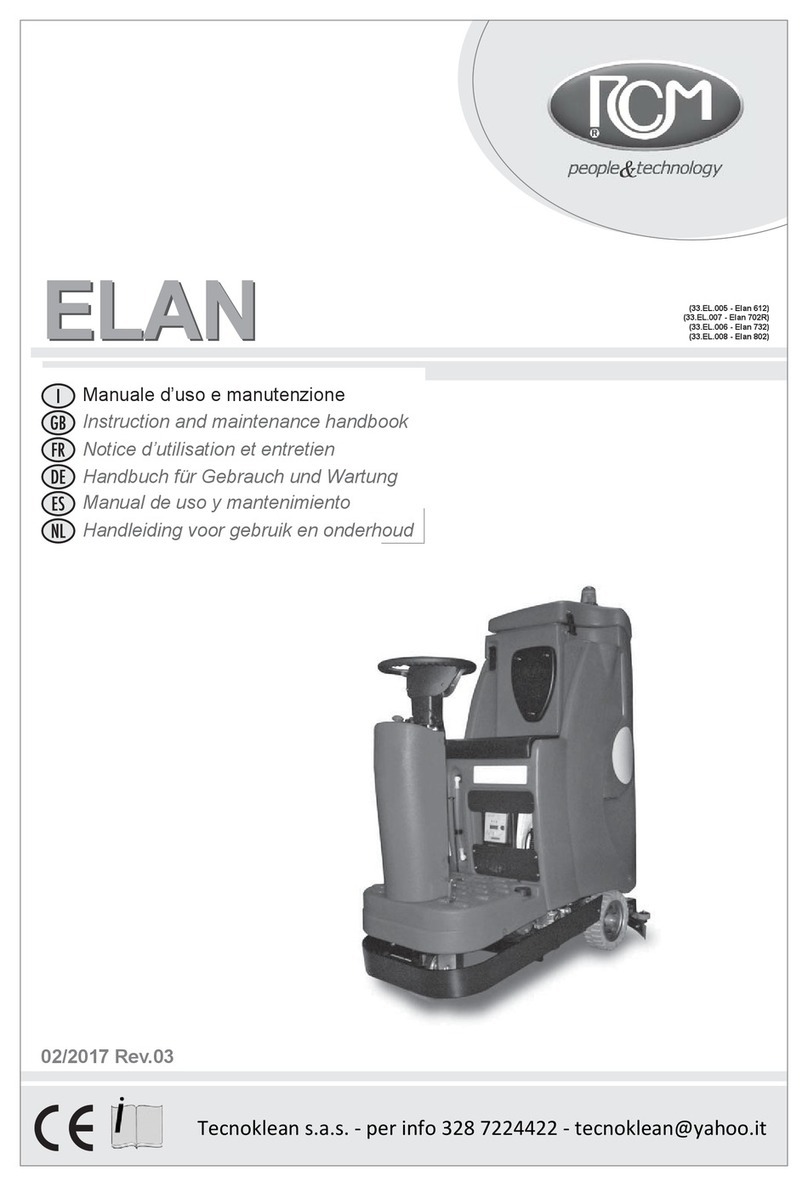
RCm
RCm Elan Series Instruction and maintenance handbook
